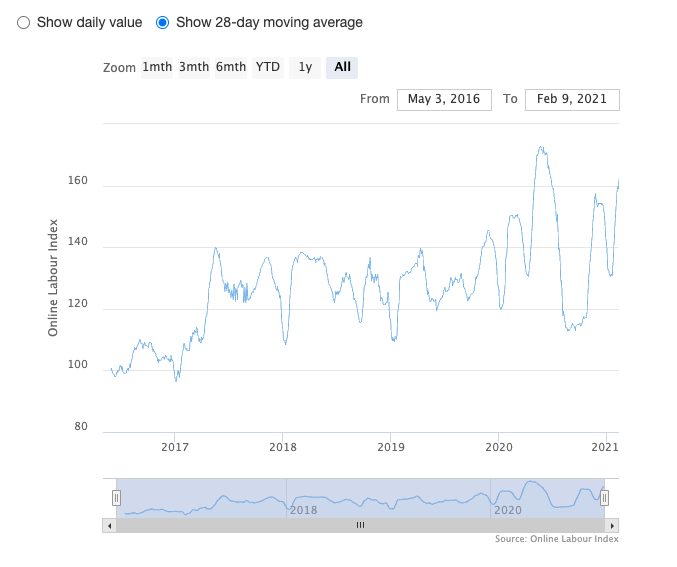
A lot of attention is paid to the monthly jobs reports put out by the Bureau of Labor Statistics. This makes sense, of course, especially in the wake of the pandemic which wiped out millions of jobs across the country seemingly overnight.
But, traditional labor statistics don’t tell the whole story. Over the past several years, many workers have left the traditional job market (sometimes by choice, sometimes not) to participate in the online gig economy.
To track trends in online work, the Oxford Internet Institute and the University of Oxford launched the Online Labor Index (OLI). The interactive tool “measures the supply and demand of online freelance labour across countries and occupations by tracking the number of projects and tasks across platforms in real time.”
The OLI shows that online gig work increased 72% between September 2016 (when tracking started) through May 2020 before falling precipitously. The recovery, however, has been swift — the index is currently at 60% above what it was in 2016.
Looking at the results by country shows that the United States is the world’s biggest buyer of online labor, and that the most common occupational category is “software development and technology,” followed by “creative and multimedia.”
Explore the OLI for more insights.
Learn more about the growth of the gig economy in this report from the ADP Research Institute: Illuminating the Shadow Workforce: Insights into the Gig Workforce in Business







